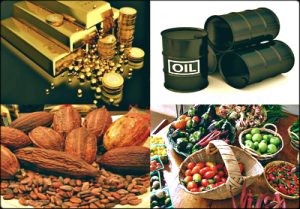Prices of foodstuff are expected to remain relatively stable with occasional drops in the month of October, 2020.
That’s according to commodity analyst, Esoko Ghana. According to Esoko, most of the commodities grown down south of the country are still in the harvest season.
It is also expected that supplies from the northern parts of the country will be sent to different markets across the country towards the end of October.
In the month of September however, there were significant price increments for some commodities nationwide.
The price of tomatoes for instance increased by 5.35 percent to close trading at GHS348.17 per crate. This was followed by Gari with a 3.78 percent increment to close at GHS 231.75 per 68kg.
The price of local rice (White), also increased by 3.18 percent to close the month at GHS 223.14 per bag. Soya bean made a 3 percent increase closing the month at GHS 294.57
Commodities that made losses included yam (Pona), which decreased 8.9 percent in price, closing at GHS 742.83 per 100 tubers. Maize (White) and groundnut shelled recorded a 5.28 and 3.79 percent loss respectively closing at GHS 153.86 and GHS 544.43. Cowpea inched downwards by 1.61 percent to close at GHS 477.14
Meanwhile, the highest price of a bag of maize which sold t GHS180, was recorded in Dambai and Accra markets, while the lowest price of GHS110 was recorded in Bawku, should more of the commodity be supplied to the market the price will see a reduction.
The highest price sale of a bag of local rice was recorded at Dambai at GHS 480 while the lowest price was recorded in Bawku at GHS 110 for a bag.
Once again, Dambai market recorded the highest price sale for a crate of tomatoes at GHS500 with Kumasi recording the lowest price ta GHS150 per crate.
In an interview with Citi Business News, Content Manager, of Esoko Francis Danso-Adjei, explained the dynamics of what should result in price stability for the month of October
“From the report that we put out, you realize that in the southern part of the country a lot of the commodities have been harvested; but we are still waiting for the commodities from the northern part to also come into the market. So looking at the trend that we have where a lot of the commodities that are within the southern part of the country are dropping and with the coming on board of the northern commodities, we expect that prices will remain fairly stable, and then depending on which commodity prices are brought onto the market in the latter part of the month, that will also drive commodity prices downwards”.
Source: Citibusinessnews.com







